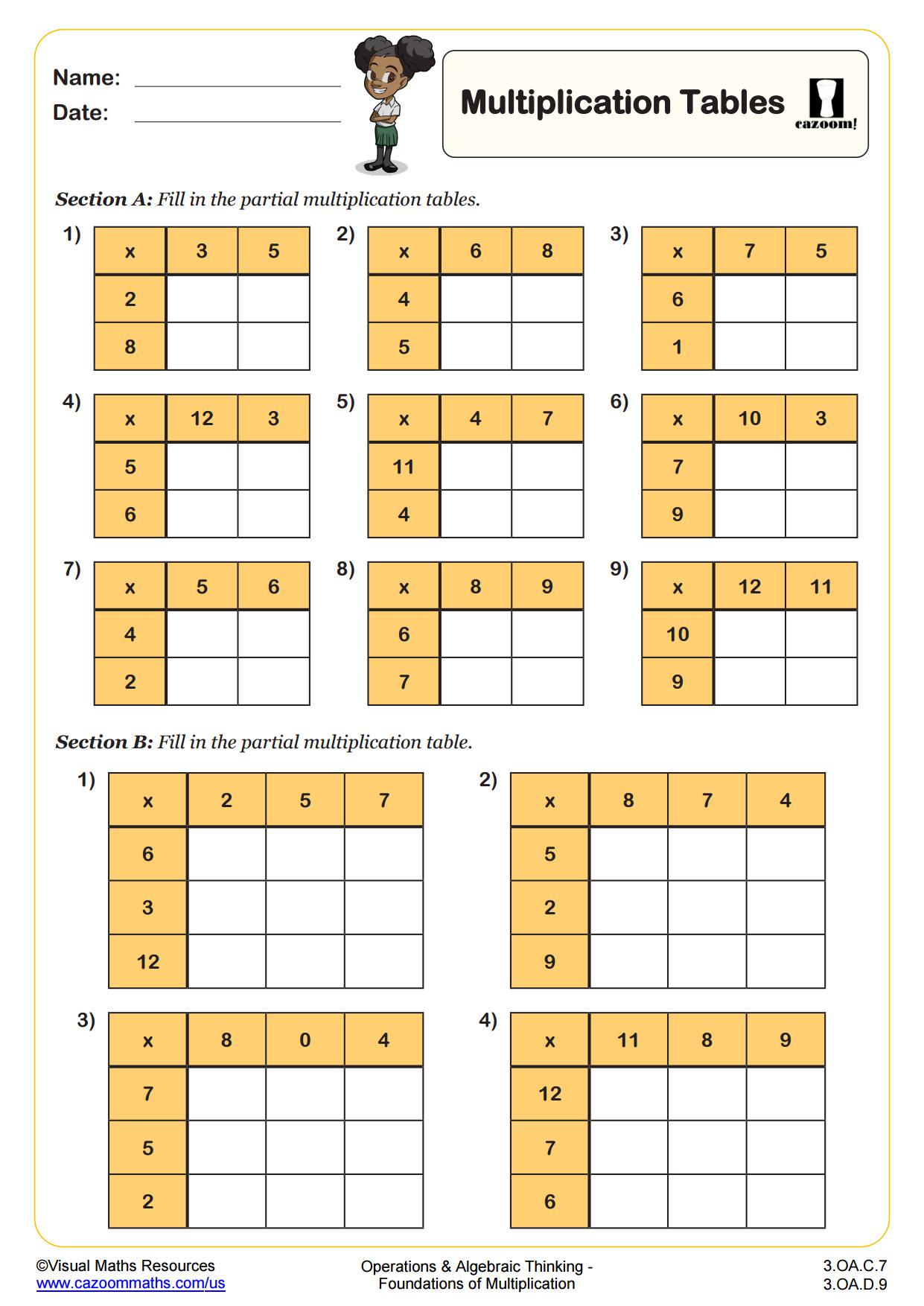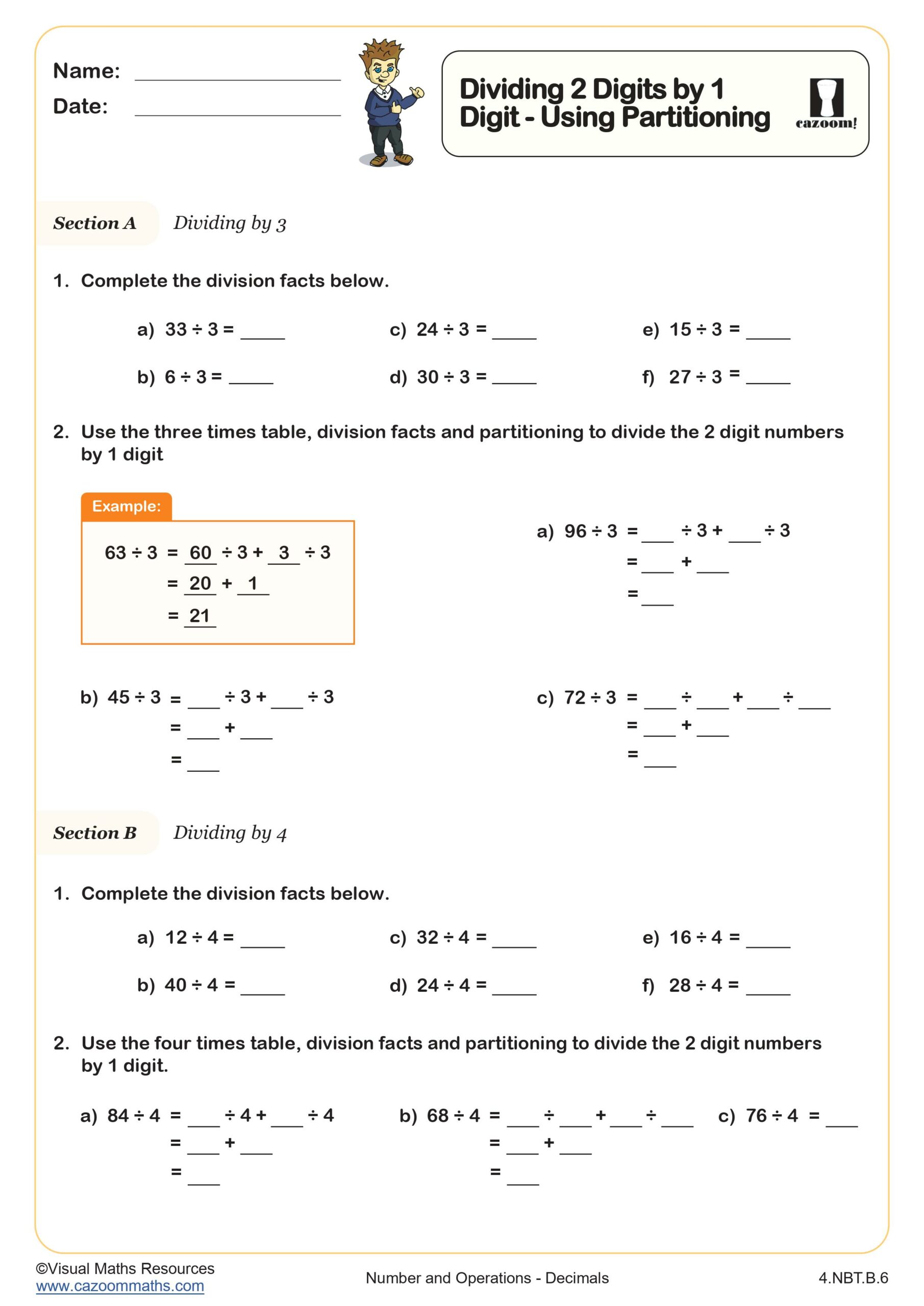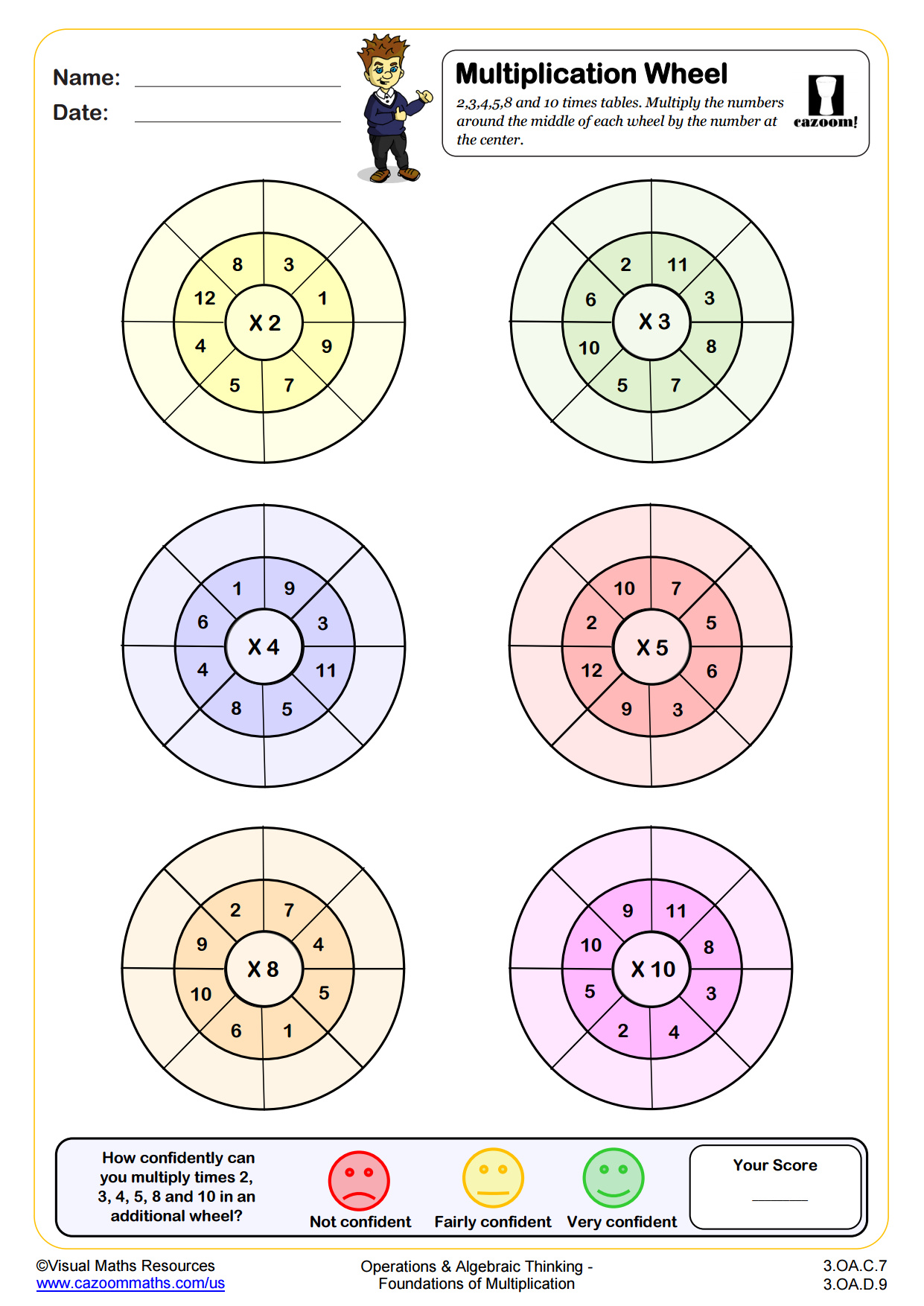Loading...
Back to:
Multiply 2 Digits by 1 Digit WORKSHEET
Suitable for Grades: 4th Grade, 5th Grade
CCSS: 3.OA.B.5, 4.NBT.B.5
CCSS Description: Apply properties of operations as strategies to multiply and divide.2 Examples: If 6 × 4 = 24 is known, then 4 × 6 = 24 is also known. (Commutative property of multiplication.) 3 × 5 × 2 can be found by 3 × 5 = 15, then 15 × 2 = 30, or by 5 × 2 = 10, then 3 × 10 = 30. (Associative property of multiplication.) Knowing that 8 × 5 = 40 and 8 × 2 = 16, one can find 8 × 7 as 8 × (5 + 2) = (8 × 5) + (8 × 2) = 40 + 16 = 56. (Distributive property.)
Multiply a whole number of up to four digits by a one-digit whole number, and multiply two two-digit numbers, using strategies based on place value and the properties of operations. Illustrate and explain the calculation by using equations, rectangular arrays, and/or area models.
Multiply a whole number of up to four digits by a one-digit whole number, and multiply two two-digit numbers, using strategies based on place value and the properties of operations. Illustrate and explain the calculation by using equations, rectangular arrays, and/or area models.
Multiply 2 Digits by 1 Digit WORKSHEET DESCRIPTION
Learners will use their knowledge of place value and the 2, 3, 4, 5, 8, and 10 times tables to multiply 2-digit numbers by single digits mentally throughout this worksheet.
Students begin by multiplying multiples of 10 by a single digit in section A. Here, learners are encouraged to consider 30 as 3 tens before completing the multiplication.
Next up, learners will answer multiplication questions that require no regrouping across sections B and C. Number sentences and partitioning are used throughout section B. Section C still encourages students to partition numbers into 10s and 1s but this time part part whole models are used for variation.
In section D, pupils will answer 6 multiplication questions that require regrouping.



